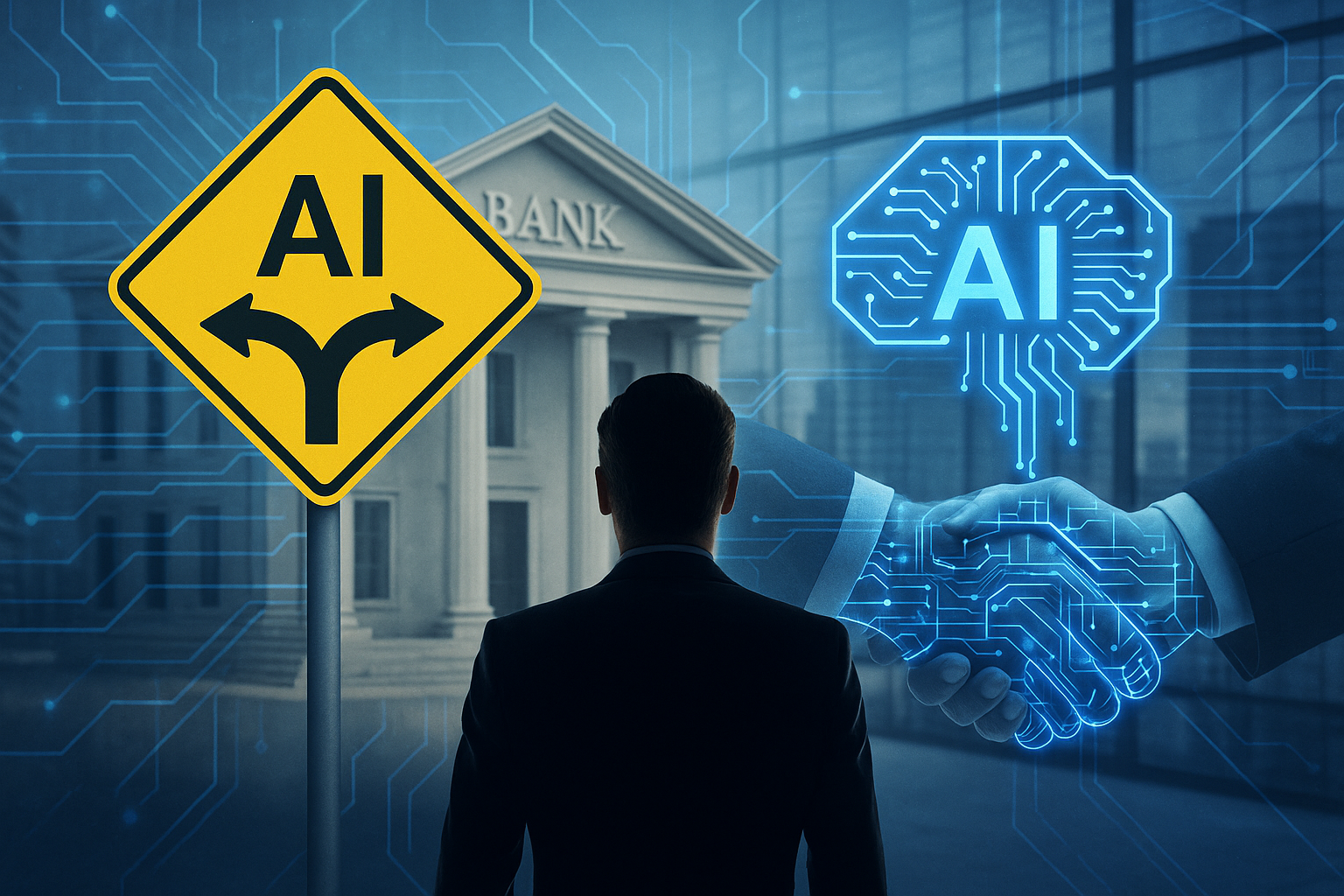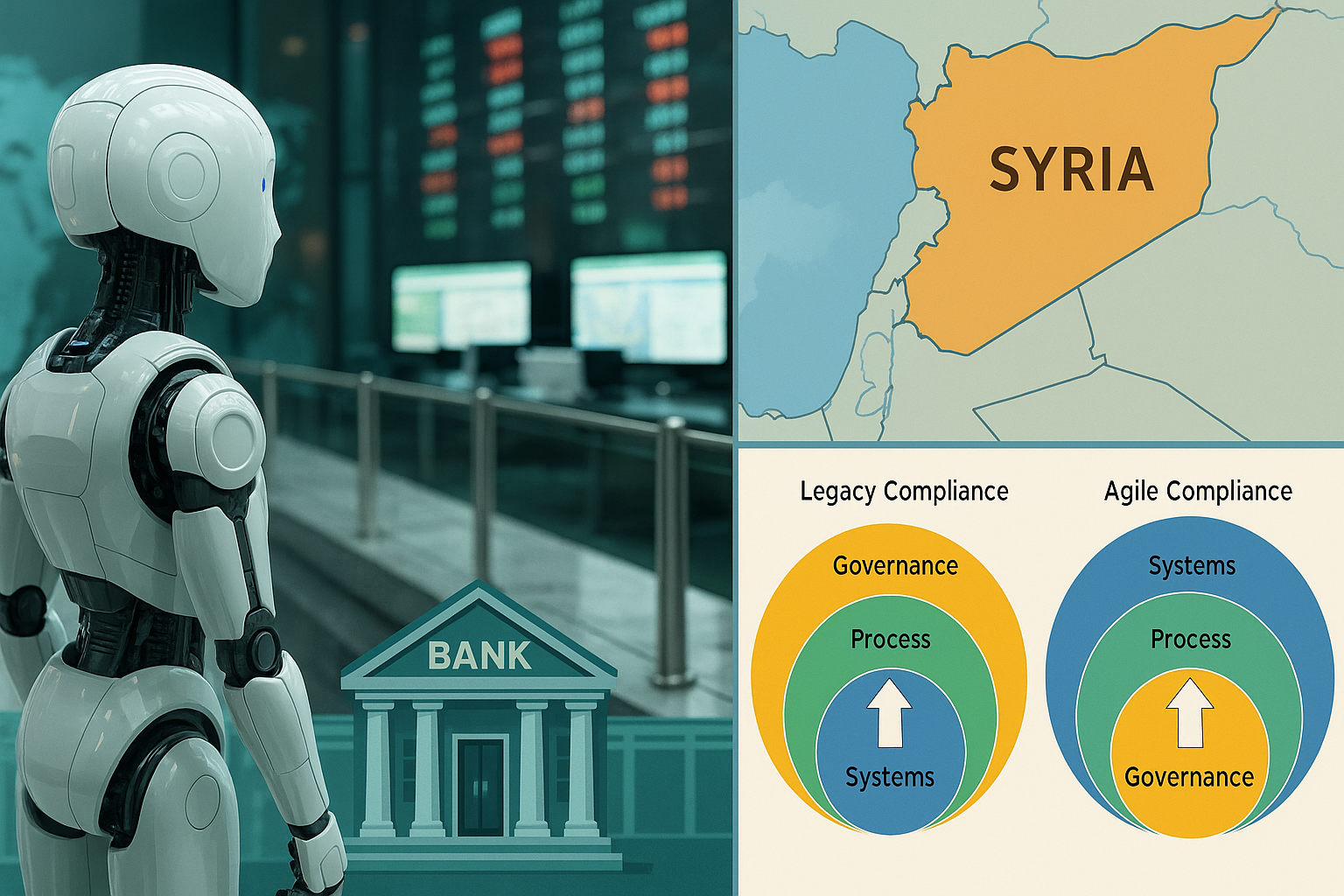Guardrail AI - Modernized Safety and Soundness in 2025

In our recent, irreverent piece, Banking AI in 2025: A Madness Most Discreet, we attempted to simplify the cacophony around AI in banking to focus on actionable priorities for bankers in 2025. As a follow-up, we wanted to look more closely at bridging the gap between regulatory guidelines around AI, which focus on the “what” and the “why,” and the policies and procedures that focus on the “how.” Enter Guardrail AI: a forward-looking approach that addresses both the processes and technologies necessary to implement the safety and soundness mandate of banking. Building upon Agile Compliance, it offers a practical framework for establishing governance-driven processes for banks in 2025.
Safety and Soundness Technology
As technologist, we realize that banks have a non-negotiable regulatory requirements which are hard to codify into technology. Their safety-and-soundness mandate underpins their legitimacy: by diligently managing risks, safeguarding deposits, and ensuring institutional resilience, banks uphold both regulatory requirements and public trust. While AI is welcome idea in this environment. However, regulators and bankers alike have responded to AI adoption with the requirement for "guardrails" or a "human in the loop" to prevent AI from inadvertently compromising the banking system.
Yet as AI evolves at breakneck speed, the processes to implement “guardrails” remain ill-defined —are they strict rules, flexible principles, or dynamic frameworks? In the absence of a definitive answer, the default approach is to use human resources to provide oversight over rapidly evolving AI technology. This involves further increase of trained manpower and its associated costs for banks which is hard to implement. The result is a growing tangle of risks that often outpace any emerging technology standards. Here are some key concerns:
- Ethical Vulnerabilities: Hidden biases and opaque algorithmic decisions can erode customer trust and tarnish reputations.
- Regulatory Uncertainty: Financial institutions face increasingly strict requirements, but industry-wide AI governance guidelines are still evolving.
- Operational Instability: Weak oversight can enable compliance breaches, fraudulent activity, and even systemic failures.
The Guardrail AI Approach
Within this context, Guardrail AI emerges as a guiding framework. Rather than inhibiting creativity, Guardrail AI channels innovation responsibly, ensuring that cutting-edge technologies align with regulatory requirements. This approach marries machine intelligence with human judgment, creating a balanced model for risk management and operational integrity.
Lets look at three important aspects of Guardrail AI.
The first aspect of implementing Guardrail AI is translating regulations into policy and procedure documents as they evolve. Banks are very familiar with implementing procedures and controls. However they may struggle in keeping pace with the tomes updates to regulatory guidelines. Modern LLM models powered by Generative AI can digest thousands of pages of regulation to produce updates to frameworks and controls required to stay compliant. Guardrail AI manages the human supervision and collaboration required to make sure that they are rational and contextual to a bank.
The second aspect of Guardrail AI is putting hard boundaries to any decisions or recommendations that are driven by AI. These are the machine equivalent of human controllers that ensure that policies are not compromised. Given the probabilistic nature of Deep ML and Gen AI, this aspect of Guardrail AI can be driven by a deterministic logic. Predictika’s deterministic Logic Validation Engine is a good example of technology for this aspect of Guardrail AI. This engine continuously guides LLM outputs to stay aligned with business rules. This approach reduces compliance risks and mitigates “hallucinations” or off-policy behavior in generative models.
The third aspect of Guardrail AI is off loading routine judgment calls to intelligent agents. Human judgment cannot be fully transferred to AI but rules of thumb and best practices can be learnt effectively by Agentic AI. Unlike customer support, compliance is a high-stakes use case for Agentic AI. Banks have to be more circumspect in delegating decisions to Agents. Guardrail AI makes it easier to delegate by ensuring that hard boundaries are maintained and any aberrations are reviewed by a human.
Here are a few more components of the Guardrail AI approach that will evolve rapidly as as it is adopted by banks.
Adaptive Controls: Static rules can’t keep pace with evolving threats and market fluctuations. Guardrail AI employs machine learning to continuously monitor, detect anomalies, and recalibrate controls in real-time.
- Example: Transaction monitoring that updates fraud thresholds as behavioral patterns shift, minimizing friction without compromising security.
Human-Centered Governance: While algorithms can scale massively, certain judgments require empathy, ethical nuance, and contextual understanding. Guardrail AI ensures skilled professionals remain integral to critical decisions.
- Example: Human analysts reviewing complex loan approvals to mitigate systemic biases and ensure fair lending practices.
Radical Transparency: Trust demands clarity. Guardrail AI mandates explainability, accessible documentation, and comprehensive audit trails.
- Example: Explainable AI (XAI) in credit scoring, allowing regulators, auditors, and customers to understand how decisions are made.
Agile Compliance: The Framework Behind Guardrail AI

A crucial component of Guardrail AI is Agile Compliance—a concept outlined in Amberoon’s white paper, which emphasizes that governance should dictate your bank’s processes, which in turn shape the technology you deploy. Unfortunately, most banks invert this order by purchasing technology first and then wrestling with policy and process to match it.
The technology behind Guardrail AI must enforce a set of banking regulatory constraints and best practice rules. These rules and constraints are the core that defines the guardrails while the experience-based models that govern day to day decision making must operate within these boundaries while maintaining a degree of freedom and operational flexibility.
Seizing the Moment
A McKinsey study pegs AI’s added value in banking at up to $1 trillion by 2030 but warns that unmanaged risks can dissolve those gains. Guardrail AI, fortified by Agile Compliance, offers a concrete path to seize AI’s opportunities without sliding into operational or reputational traps.
As regulators worldwide tighten accountability—from the EU’s AI Act to shifting U.S. stances—banks that adopt Guardrail AI now will outpace evolving standards, winning trust from customers, investors, and the market. By integrating Guardrail AI with Agile Compliance, institutions go beyond empty calls for “guardrails” and establish real, strategic safeguards. Guided by Amberoon’s expertise, they’ll master today’s AI complexities and be primed for tomorrow’s challenges.
Amberoon is at the forefront of shaping this responsible future. Contact us today to learn how our Guardrail AI and Agile Compliance solutions can elevate your institution into a position of trust, leadership, and long-term success.
Posts by Tag
- big data (41)
- advanced analytics (38)
- business perspective solutions (30)
- predictive analytics (25)
- business insights (24)
- data analytics infrastructure (17)
- analytics (16)
- banking (15)
- fintech (15)
- regulatory compliance (15)
- risk management (15)
- regtech (13)
- machine learning (12)
- quantitative analytics (12)
- BI (11)
- big data visualization presentation (11)
- community banking (11)
- AML (10)
- social media (10)
- AML/BSA (9)
- Big Data Prescriptions (9)
- analytics as a service (9)
- banking regulation (9)
- data scientist (9)
- social media marketing (9)
- Comminity Banks (8)
- financial risk (8)
- innovation (8)
- marketing (8)
- regulation (8)
- Digital ID-Proofing (7)
- data analytics (7)
- money laundering (7)
- AI (6)
- AI led digital banking (6)
- AML/BSA/CTF (6)
- Big Data practicioner (6)
- CIO (6)
- Performance Management (6)
- agile compliance (6)
- banking performance (6)
- digital banking (6)
- visualization (6)
- AML/BSA/CFT (5)
- KYC (5)
- data-as-a-service (5)
- email marketing (5)
- industrial big data (5)
- risk manangement (5)
- self-sovereign identity (5)
- verifiable credential (5)
- Hadoop (4)
- KPI (4)
- MoSoLoCo (4)
- NoSQL (4)
- buying cycle (4)
- identity (4)
- instrumentation (4)
- manatoko (4)
- mathematical models (4)
- sales (4)
- 2015 (3)
- bitcoin (3)
- blockchain (3)
- core banking (3)
- customer analyitcs (3)
- direct marketing (3)
- model validation (3)
- risk managemen (3)
- wearable computing (3)
- zero-knowledge proof (3)
- zkp (3)
- Agile (2)
- Cloud Banking (2)
- FFIEC (2)
- Internet of Things (2)
- IoT (2)
- PPP (2)
- PreReview (2)
- SaaS (2)
- Sales 2.0 (2)
- The Cloud is the Bank (2)
- Wal-Mart (2)
- data sprawl (2)
- digital marketing (2)
- disruptive technologies (2)
- email conversions (2)
- mobile marketing (2)
- new data types (2)
- privacy (2)
- risk (2)
- virtual currency (2)
- 2014 (1)
- 2025 (1)
- 3D printing (1)
- AMLA2020 (1)
- BOI (1)
- DAAS (1)
- Do you Hadoop (1)
- FinCEN_BOI (1)
- Goldman Sachs (1)
- HealthKit (1)
- Joseph Schumpeter (1)
- Manatoko_boir (1)
- NationalPriorites (1)
- PaaS (1)
- Sand Hill IoT 50 (1)
- Spark (1)
- agentic ai (1)
- apple healthcare (1)
- beneficial_owener (1)
- bsa (1)
- cancer immunotherapy (1)
- ccpa (1)
- currency (1)
- erc (1)
- fincen (1)
- fraud (1)
- health app (1)
- healthcare analytics (1)
- modelling (1)
- occam's razor (1)
- outlook (1)
- paycheck protection (1)
- personal computer (1)
- sandbox (1)
Recent Posts
Popular Posts
Here is a funny AI story.
Every community bank CEO now faces unprecedented...
On May 13, 2025, the U.S. government announced...



